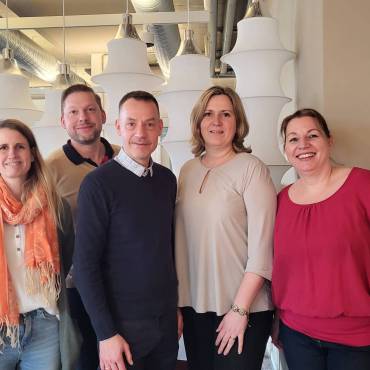Au pair childcare gains a local following
Sixteen years ago, Larry and Karen Rosolowski were expecting their first baby and living in area of upstate New York that lacked the cultural diversity they wanted their daughter to know and experience. Faced with that predicament, they found a unique solution: au pair childcare, or an opportunity to marry live-in childcare and exposure to other cultures.
“I put a lot of value on broad exposure to diversity,” Larry said. “We saw this as a way to give our daughter Rachel some diversity of experience – to understand a person that celebrates different holidays, speaks a different language, eats different food. This was a way for us to bring diversity of experience right into our own home.”
Rachel, now a junior at Redondo Union High School, had her first au pair when she was three months old. Throughout her childhood, split between New York and Redondo Beach, she was looked after by young caretakers from Germany, Austria, Sweden, Slovakia, and Czech Republic.
An au pair is a young person from another country who helps with housework and childcare in exchange for room, board, and experience. The French term means “on par” or “equal,” and implies a relationship of intimacy and familiarity – the idea is for an au pair to become part of the family, as opposed to serving as a domestic worker.
The U.S. State Department requires that au pairs be between the ages of 18 and 26, and provide full-time childcare and household help, in exchange for a J-1 visa.
They are available 24 hours – an advantage over daycare centers, most of which close at the workday’s end. Au pairs are also cheaper than live-in nannies, who generally make between $350 to $1,200 per week and are, as domestic employees, eligible for overtime pay and benefits.
An au pair works up to 45 hours per week for $195.75, and must receive two weeks of paid vacation and $500 toward education, according to guidelines set forth by the U.S. State Department.
The concept is growing in popularity amongst American parents. Several agencies coordinate au pair childcare locally. Cultural Care Au Pair, the agency that the Rosolowskis used, estimates that about 30 au pairs from overseas are working in the South Bay at present.
Agencies require that potential au pairs undergo extensive screening, background checks, in-person interviews, and orientation.
Larry admits to early trepidation about the prospect of allowing a stranger into his home to care for his daughter. Early on, though, all doubt dissipated.
“We certainly thought twice,” he said. “I remember my wife saying, ‘Gee, we’re going to bring a new person into our house just as we’re bringing a new person into our house.’ The truth is, though, that the benefits far outweighed our concerns.
“That just speaks to the background checks and the accuracy of the application,” he said. “[Cultural Care Au Pair] has folks over in other countries meeting these au pairs in person. That makes a big difference.”
The key to a healthy relationship with an au pair, he said, is to treat her (or him, but most are female) like a member of the family.
“We had very successful experiences, and I believe we had successful experiences because we treated our au pair like a member of the family,” Larry said. “When we went on vacation, our au pair was welcome to come, and when we went over to someone’s house for dinner, our au pair was also welcome to come. Our friends accepted our au pairs as part of our family, and they came when we travelled to family weddings.
“Whenever I heard of situations that weren’t working, the impression I got was that those families were treating the au pair more like an employee,” he said. “I think the program is most successful when the au pair is treated like a member of the family.” The concept is also gaining followers amongst young Americans seeking overseas travel opportunities. El Segundo resident Caitlin Larkin, 25, worked as an au pair in France upon graduating from University of California Santa Cruz in 2011.
“It’s a great way to travel because it’s basically paid for,” she said. “I worked 30 hours a week but I had full room and board and my host family paid for my French lessons. You live off very small wages but you don’t need a whole lot because you have room and board. It’s the best experience – it’s a great way to travel and a great gap-year activity.”
Nicole Amador, a 25-year-old from Redondo Beach, also worked as an au pair for a year after she graduated from Wright State University in Ohio. From her home base in Perth, she was able to travel cheaply around Australia and to Indonesia and the Cook Islands.
“Being an au pair was, for me, a way to see the world,” Amador said. Larry is encouraged that young Americans are seeking au pair opportunities, and stresses the value of the cross-cultural experience. “If my daughter wanted to do that for a year,” he said, “I would greatly support her.”
Source: http://www.easyreadernews.com/




